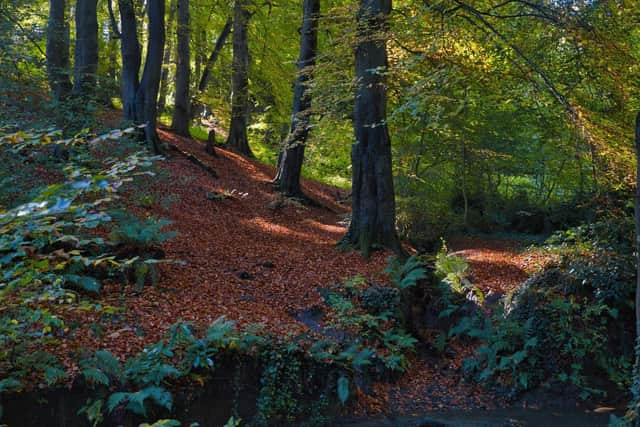Wonderful trees


Trees are amazing, though sadly we don’t often take enough time to admire them. Think, for example, of the process of photosynthesis whereby leaves capture energy from the sun to produce nutrients; or of the billions of leaves which appear each spring, and fall each autumn - and what about the wonderful habitat they provide for so many insects, birds and other animals.
Trees are also often part of human conversation because of their role in biodiversity, a subject that has implications for modern agriculture. Most of us are aware of the continued destruction of many tropical rain forests, but perhaps less aware that similar deforestation happened in Ireland over centuries past.
Advertisement
Advertisement
Thankfully there are now some initiatives that seek to reverse this, including incentives for farmers to return some of their land to woodland. There are, of course, other problems for trees, such as diseases like Dutch elm disease, and the current big issue of ‘ash die-back’. I recently heard a pessimistic estimate that perhaps as many as up to a third of all our tree species worldwide may become extinct in a few decades time.
At the start of the Bible, we read the account of creation and how at the end of creation week God made Adam and Eve, placing them in a garden full of trees – trees which produced all sorts of fruit. They were allowed to eat from all of those trees except one; it was called ‘the tree of the knowledge of good and evil’ (Genesis 2).
You may be familiar with the story, but sadly they disobeyed God by eating from that tree, so bringing sin into the world, with all the ugly consequences which we see around us, both for mankind and the world itself.
Then, in the very last chapter of the Bible, we read of another tree, called the ‘tree of life’ (Revelation 22:1-5). It symbolises eternal life, which God will give to all His people, to all who know Jesus as Saviour.
Advertisement
Advertisement
Now in between these two trees, at the beginning and end of the Bible, we find a third one. In Galatians 3:13 we read these words, ‘cursed is everyone who is hung on a tree’.
The reference here is to the death of Jesus, who was ‘hung’ on a tree, or crucified at Calvary. And, as He died there, Jesus became a curse: that is, He took the curse, or punishment, for sin which should come upon all who sin (which is all of us), and He did that so that those who repent and come to trust truly in Him as Saviour, can be forgiven and have eternal life.
So the Gospel is, in a sense, like a story of three trees: In the beginning sin entered the world through Adam and Eve taking the fruit of a tree, and at the end eternal life is symbolised by a tree, the tree of life. In between Jesus is hung on a tree, the cross, to purchase that life for His people.
How important it is then, that we understand how serious sin is, why Jesus died on the tree of the cross, and that we truly need to come to know Him, the only one who can make us right before God and enable us to eat of the tree of life - and know eternal life itself.
Advertisement
Advertisement
Rev Dr Kenneth Patterson is a former GP who was ordained for the ministry in 1990. He retired in 2013 after 19 years as Minister of Castledawson and Curran Presbyterian churches in South Derry. Having worked on farms during his student days, before coming a minister, as a hobby he now enjoys restoring vintage farm machinery.
If you would like to talk to someone about any of the issues raised in this article, please email Rev Kenny Hanna, PCI’s Rural Chaplain at [email protected] or call him on 07938 488 372